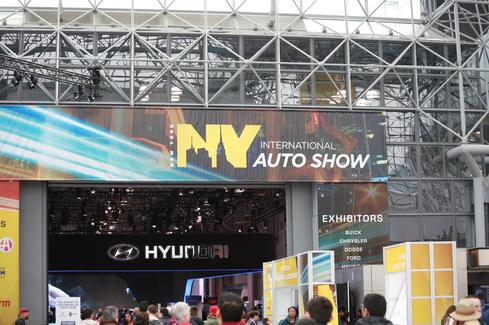Google Self-Driving Car Prototype Cruises Into AustinGoogle Self-Driving Car Prototype Cruises Into Austin
Google's self-driving car will join its self-navigating Lexus vehicles in Austin this month.


New York Auto Show: Cool Cars With Hot Tech
New York Auto Show: Cool Cars With Hot Tech (Click image for larger view and slideshow.)
The latest round of testing for Google's self-driving car will bring the company's vehicles to the streets of Austin, the Texas capital. Mayor Steve Adler announced the agreement between the search engine giant and the city over this past weekend.
"We spent Saturday at +Thinkery, a children's museum in Austin, and couldn't have had more fun! We brought along our prototype vehicle and Lexus SUV, and hung out to answer questions about our project and learn what Austinites think of it so far," according to Google's Self-Driving Car Project blog in a post written on Monday, Aug. 31.
In the next few weeks, Google's prototype vehicles will be out navigating the same area north and northeast of downtown where their Lexus vehicles have been driving by themselves for the last couple of months.
One of the company's Lexus SUVs is there with safety drivers aboard, driving a few square miles around northern Austin.
The Google blog post also noted that both vehicles will continue to have test drivers aboard, and entreated the city's residents to continue sharing their thoughts with the company.
The decision to mention that drivers will remain on board may have been an effort to reassure skeptics with additional safety precautions.
The company's principal engineer and software lead for Google's self-driving cars wrote a blog post detailing the most recent collision, which occurred during the evening rush hour of July 1 outside Google's corporate headquarters in Mountain View, Calif.
During the Q&A at the children's museum it was also revealed that the self-driving car does not have wipers on the windshield, but instead over the headlights, which serve as the eyes of the car.
The headlights have sensors designed to detect objects as far as two football fields away in all directions, including pedestrians, cyclists, and vehicles -- even plastic shopping bags or birds fluttering past. The software processes all the information to help the car safely navigate the road, of course neither getting tired nor distracted.
Google also said two of the most popular answers residents had to the question of what would they do in a car if they didn't have to drive were: eating tacos and reading.
The company's fleet of more than 20 self-driving vehicles and its team of safety drivers have logged about 1.7 million miles -- both manually and autonomously. The cars have self-driven nearly a million of those miles. They now complete an average of around 10,000 self-driven miles a week.
While Google may be racking up an impressive list of mileage stats, so far one other company in the nascent self-driving car market has achieved an attention-getting milestone.
[Read about why Gartner says IT should pay attention to autonomous cars.]
In April, automotive technology specialist Delphi completed the first successful coast-to-coast trip by an automated vehicle -- an Audi Q4 SUV nicknamed Roadrunner, which drove from Treasure Island in San Francisco to New York City -- a distance of nearly 3,400 miles.
Then there is the mysterious Project Titan from Apple, which may or may not be the company's effort at a driverless car. So far it seems that Apple is close to testing its concept. The company has, for instance, started to hire more engineers with expertise in autonomous vehicles.
About the Author
You May Also Like






